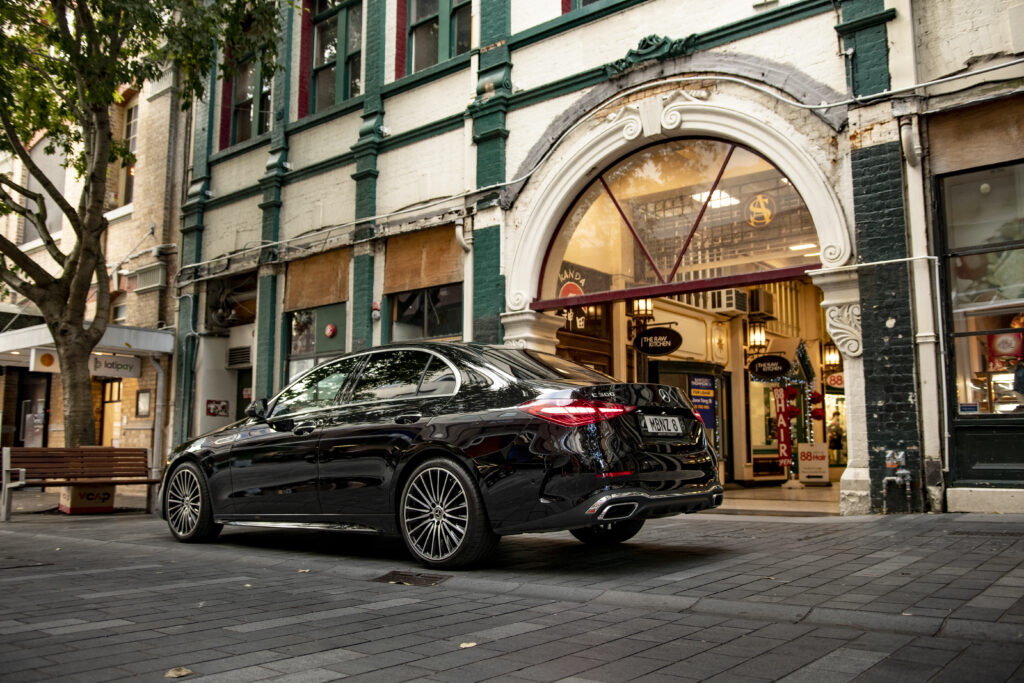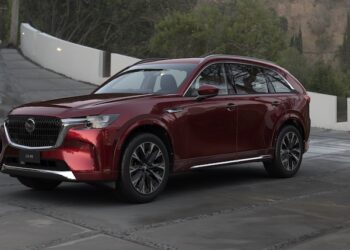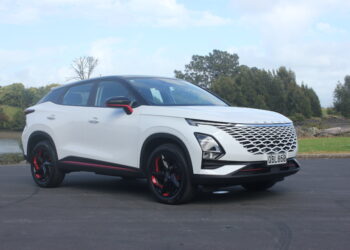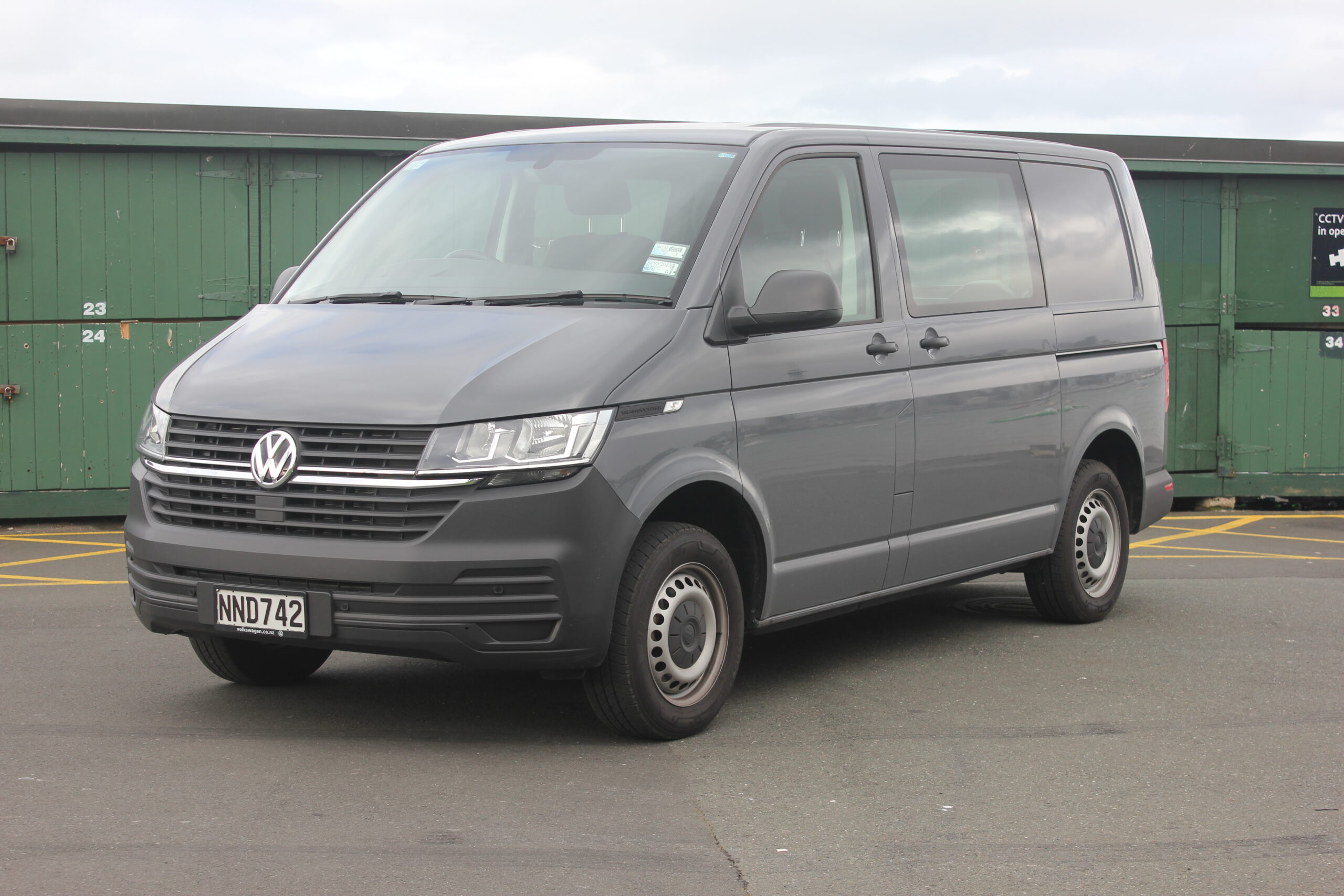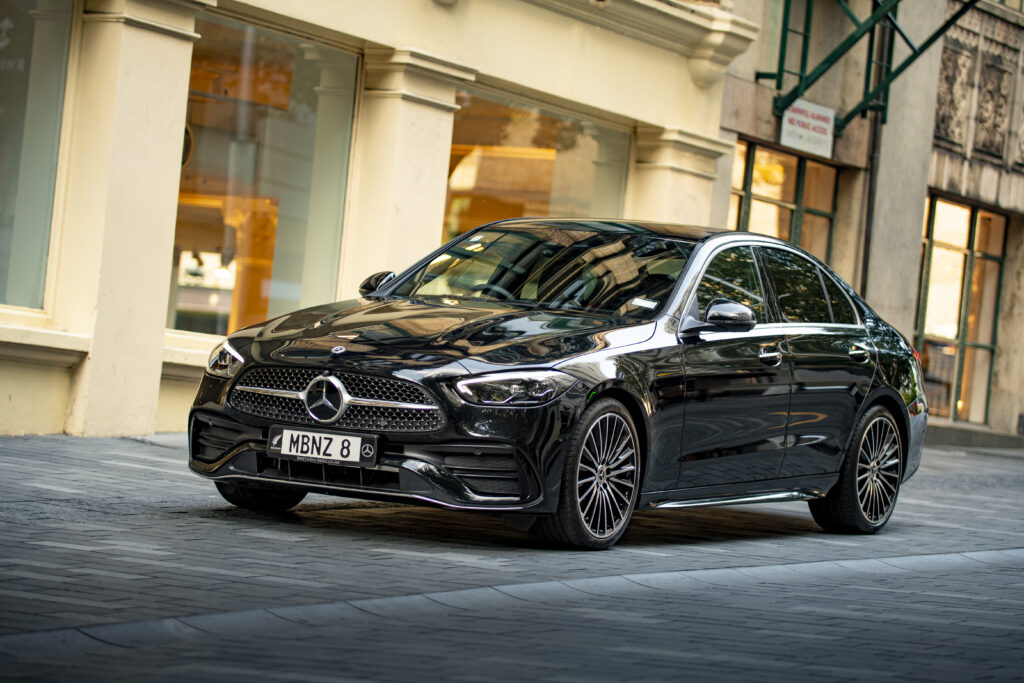
Few cliches in the automotive world have more mileage on the clock than identifying the Mercedes C-Class as the baby S-Class.
It’s a handy thought; the idea that those who indulge in one of its most affordable sedans could feel like a movie star, a sheikh, or any of the other positions associated typically with S-Class clientele at a fraction of the price.
Whether one’s cynical of the turn of phrase, it’s hard to argue that with the arrival of the new W206 C-Class, the nameplate has ever been closer to being an affordable S-Class surrogate.
It looks just about the same inside and out, with plenty of impressive features that have trickled down from the top.
THE NUMBERS
The C-Class line-up is a condensed one these days. The C 200 can be had in sedan, coupe, or cabriolet form, while the C 300 skips the droptop.
The line-up starts at $86,000 for the C 200 sedan, capping off at $102,900 for the pictured C 300 sedan and $106,900 for the equivalent coupe. For context, that’s less than half the price of the most affordable S-Class.
The key thing that differentiates the 200 and 300 is what’s under the bonnet. Both get a turbocharged 2.0-litre four with Mercedes’ mild hybrid EQ Boost tech, but the 200’s version makes 150kW/300Nm and the 300’s version produces 190kW/370Nm.
Compared to the last C, the new one is 63mm longer overall, with 25mm of that devoted to wheelbase.
Legroom for rear seat passengers is up 35mm, headroom up 13mm, and the boot is bigger too, now offering 455 litres of space.
In the world of premium fleet vehicles, this is a worthwhile consideration for anyone considering the C-Class for corporate fleet duties.
INSIDE
It’s instantly apparent the moment you climb in that the C-Class’ innards evoke its S-Class big brother.
The dashboard layout is both futuristic and familiar, looking and feeling like a direct copy/paste from the S. Inevitably the build quality is excellent and attention to detail is excellent.
The 11.9-inch touchscreen dominates the space, tilted slightly towards the driver, its floating bezel cascading down the dash to form the centre console. It’s paired with a 12.3-inch digital cluster behind the steering wheel, with both systems running the second generation MBUX interface.
This means a more refined experience with the brand’s Hey Mercedes voice control interface and augmented reality navigation.
The latter overlays interactive 3D arrow prompts and graphics (featuring things like street names and house numbers) over vision from a front-facing camera.
Throw in the presence of a fingerprint scanner to access vehicle profiles, and you get a good picture of the amount of tech that the C-Class lifts from the S-Class.
The cabin space that Mercedes boasts about is more than just numbers on paper. It’s real.
People used to getting into the back of SUVs might need to contort themselves a little more than usual to get into the back of the C, but once you’re in the amount of room on offer is commendable.
The front seats are generously scalloped, meaning more knee comfort in the back without compromising comfort in the front.
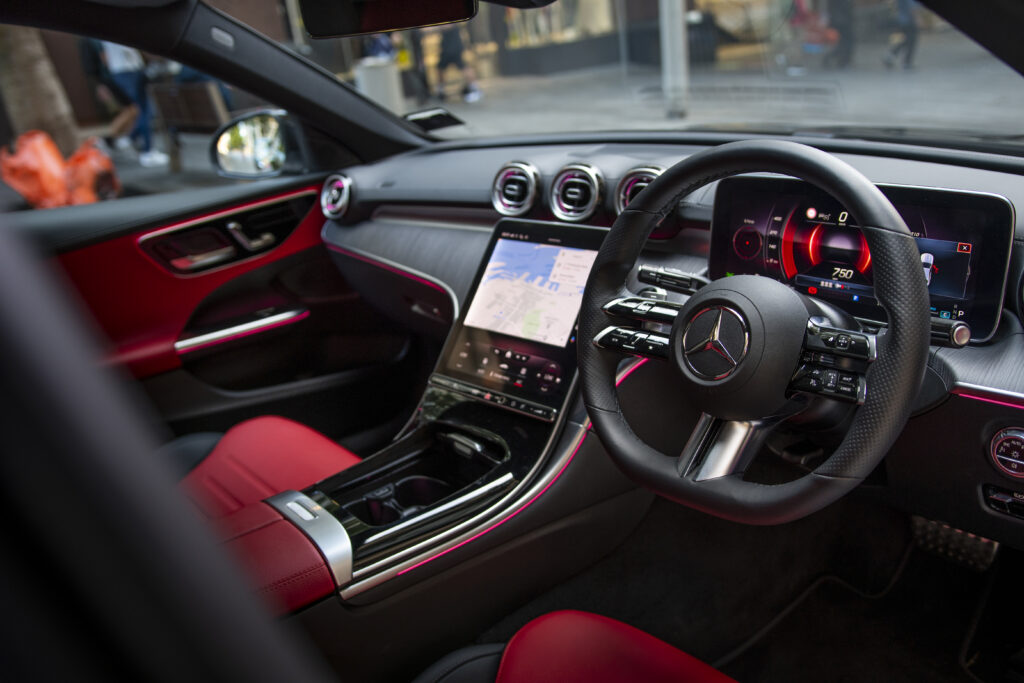
THE DRIVE
Although it’s the C 300 pictured, we also got to sample its more accessible C 200 sibling.
Though the 300 performed commendably, it’s hard to knock just how complete the 200 feels at its sharper price.
Perhaps most telling of all is how impressive the 2.0-litre four is, serving as a quality reminder that German executive sedans don’t need a luscious six-cylinder or throaty V8 to feel premium.
The EQ Boost function throws down an extra 15kW/200Nm of electric power should you need it for swift motorway overtaking or a favourite section of backroad.
It helps temper fuel economy, too, although the quoted 7.3 litres/100km is a little unremarkable.
The best thing about the 2.0, no matter which model you opt for, is its versatility. The torque window is wide, the motor pulling with gusto very early in the rev range.
Its electrified elements and turbo complement one another. The 300 is noticeably quicker and comes with a slightly deeper exhaust note, but the 200 nips at its heels. Mercedes has finessed the C’s damping impressively too.
Continuously adjustable damping is available, but it’s not worth the bother when the standard suspension package is so good at ironing out bumps.
This is especially notable since the C 300 rides on 19-inch wheels as standard. It’s as quiet inside as it is supple, too, perfect for wafting through the countryside in calming fashion.
SAFETY
Inevitably the C-Class range comes with a very comprehensive list of active and passive safety tech.
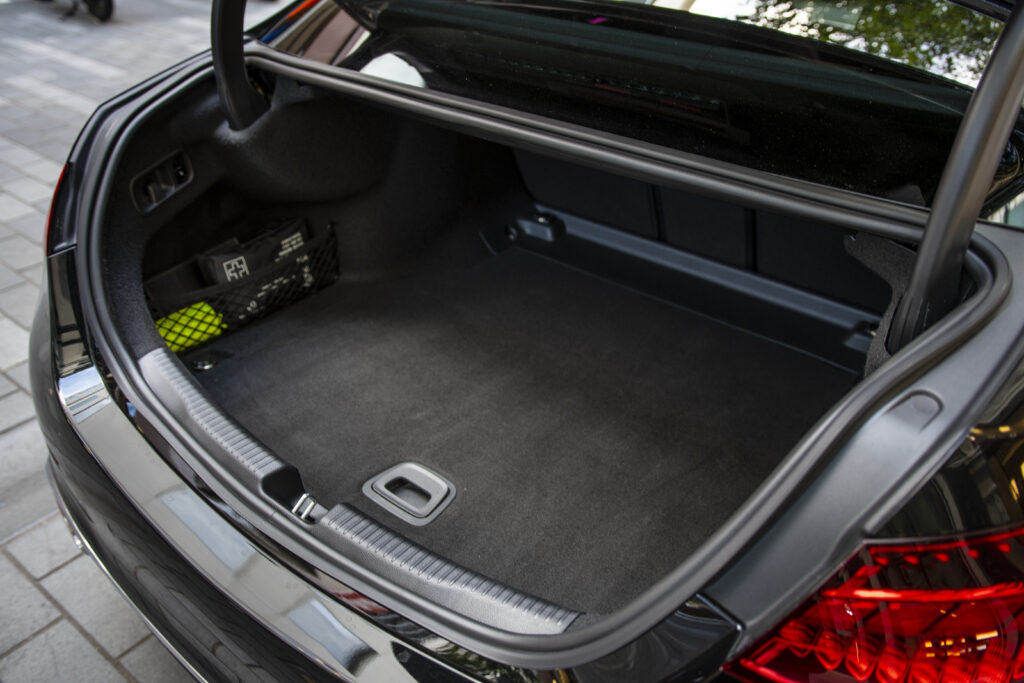
The C 200 has Distronic radar cruise, active lane keeping, rain-sensing wipers, 10 airbags, active parking assist, a 360-degree camera.
The C 300 gets even more toys, adding traffic sign assist and radar cruise that considers your route and can slow for corners.
OUR VIEW
The C-Class is once again a pointy-end contender for people seeking an entry level executive sedan. Whether it’s more fun to drive than a BMW 3 Series is up for debate, but few would disagree that it’s the more hightech and refined of the two.
The lack of a plug-in version down under is admittedly an elephant in the room. One hopes the PHEV offered in Europe is on the way.
The C 300 is a stellar, spec-laden competitor in the class. But maybe more impressive is the more affordable C 200.
Buyers opting for the cheaper model (they represent most C-Class buyers) need no longer worry that they’re buying a car that feels lacking in features or toys.
